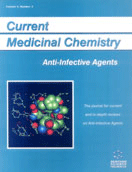Abstract
The discovery of penicillin and the tremendous success achieved in preventing fatalities due to microbial infections by using it as a therapeutic antibiotic was perhaps the starting point of systematic investigations on the research and application of therapeutic antibiotics. Over the years, a large number of natural semi-synthetic and synthetic antibiotics have been used to successfully treat infections caused by a broad range of microorganisms, especially bacteria. The mechanisms of action of therapeutically used antibiotics have been worked out and almost all of them interfere with some aspect of bacterial metabolism. The initial success in the effective use of antibiotics and the under-estimation of the ability of bacteria to overcome the effect of antibiotics has led to the serious problem of resistance to several of the therapeutically used antibiotics. The seriousness of the problem in clinical medicine has been the focus of attention in recent years. The problem was also necessitated the search for molecules that would be more refractory to the development of resistance. Now, innate immunity in species across the evolutionary scale from insects to mammals is mediated by peptides that exert their activities by permeabilizing bacterial membranes. Although the primary and secondary structures of these hostdefense peptides vary considerably, their common mechanism of action would suggest that there could be an evolutionary advantage in them to counter bacteria and resistance may not develop against them. In this review, we examine various facets of host-defense antibacterial peptides with a view to explore their potential as anti-infective agents.
 6
6

